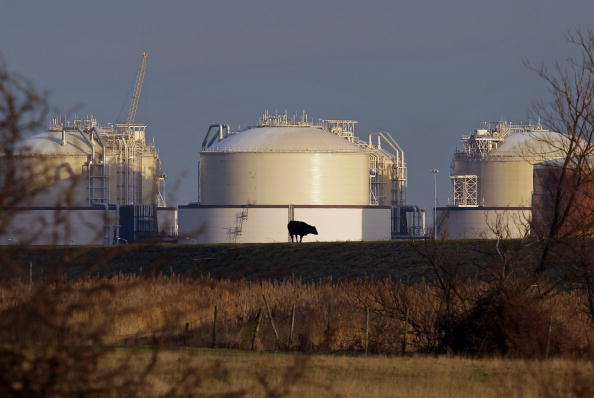Lower oil and natural gas prices have yet to find a floor since plunging last year. Oil prices, both global bench mark ICE-traded Brent and New York Mercantile Exchange traded West Teas Intermediate (WTI) crude prices have plunged by around 40 percent since this time last year amid decreased global oil demand and a supply glut on the back of increased US shale production, which is still around 9 million barrels per day (b/d). Natural gas prices have also dropped, particularly liquefied natural gas (LNG) prices. LNG prices in Asia-Pacific, which accounts for two-thirds of total global demand, are off from just over $20 per MMBtu at the start of last year to around $7.50 per MMBtu at current prices.
The impact of plunging energy prices has proved a mixed blessing. It has helped energy import-dependent countries like Japan and India, while hurting oil and gas producers. Oil production and oil service companies have also been hit hard. A few months ago low prices caused the merger of Halliburton and Baker Hughes, two of the world’s largest oil services companies. Some companies, mostly US shale producers, have been forced out of business, while others are burning through cash, producing oil below break-even points, to keep production going to pay off debt. Even integrated oil majors with market caps in the hundreds of billions of dollars have all announced capex spending reductions. Speculation about when oil prices bottom out and the market reaches equilibrium is keeping pundits and analysts busy, but the fact is that nobody can predict with certainty where oil prices will go, especially in the short term, just like nobody predicted the recent oil market blood bath.
The plunge in prices comes at a particularly vulnerable time for the LNG industry as well. Escalating and record LNG prices sparked a worldwide LNG project boom, particularly in the US and Australia. While the US will see its first LNG export project, Cheniere Energy’s Sabine Pass terminal on the Gulf of Mexico deliver first gas later this year, Australia already has three new LNG export projects on stream and seven more to come on in the next few years. Some analysts and consultants paint a rather gloomy picture for Australia’s LNG sector, while others think they can weather the low price storm.
Antonio Della Pelle, managing director of data provider and energy consultancy Singapore-Enerdata, told Breaking Energy on Thursday that most of the Australian projects coming on stream this year and next year have secured long-term contracts, around 70 percent, and are prepared for the low oil price period. “Currently, LNG project developers are reviewing their start date, and deciding if it will be better to go into the market at a low price or postpone by 6-12 months the start-up and potentially pay healthy interests on loans, lose on weaker ex-rate and maybe liable of penalties due to missed delivery deadlines,” he said. He added that the LNG business is a long-term business, so we need to look at it over a 20 plus year horizon, while a few years of low revenues should be accounted in the overall run so Australian LNG players should not panic yet.
When asked if Australia can compete against US LNG projects that will be coming on stream since US projects will source lower priced Henry Hub gas and also have a much lower capex, Della Pelle said that the main issue for Australian LNG projects is the oil price plunge and consequent low LNG prices. Della Pelle is referring to the fact that most LNG contracts in Asia-Pacific are still linked to oil prices. He said that even though US projects cost less they are facing the same issue of a lower priced LNG market where the transportation cost of delivering LNG from US to Asia now becomes a bigger portion of the total cost and will therefore lose competitiveness versus LNG indexed to oil prices.
“US LNG needs a high oil price to be competitive in Asia, above $85 per barrel sounds reasonable. I believe with depressed LNG prices then the US would be looking more to Europe than Asia,” he said. Della Pelle makes a good point. Prices of LNG bound for European destinations finally converged with Asian LNG prices earlier this year after several years of wide price disparity. US-based projects that sell gas to Europe face both considerable cost savings on transportation due to the shorter distance and less gas lost to boil-off. Because of LNG transportation and storage at −163 °C, boil-off losses are an unavoidable reality when transporting the super-chilled fuel.
In all of the recent discussions about how lower prices will impact Australian LNG projects, Della Pelle said we should not forget that many of the companies that are invested in LNG projects have benefitted recently from healthier profits when LNG prices were high. “Now we are in a situation of over-supply and depressed prices,” he said. “This should last another couple of years hence LNG players need to review their business strategy to ensure they reduce as much as possible their production costs and enhance their operating efficiency.”
He said the refinery and petrochemical industries are accustomed to riding out down cycles, and it’s time the LNG industry learn how to sail in high and low tides.

